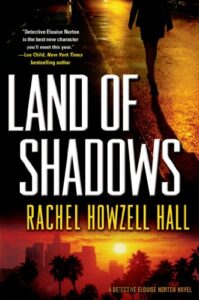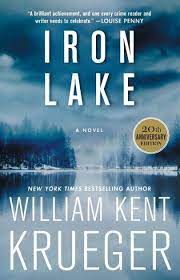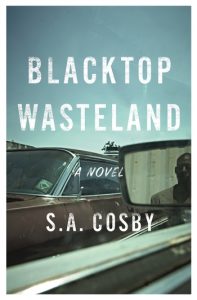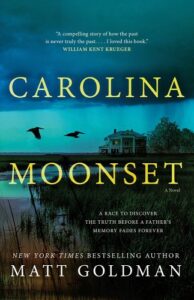I look for a strong sense of place in what I read and I make sure it’s part of what I write. In my Nils Shapiro books, I’ve set stories in Minnesota and Los Angeles. In Carolina Moonset, the story takes place in Beaufort, South Carolina. Each of those places has a direct impact on the story, so much so that the story couldn’t take place anywhere else.
I could extend this preamble but don’t want this post to be like one of those recipes where you have to read all about the author’s life when all you really want to know is how much butter to buy. So let’s get to it. Here’s a list of some of the books I admire for their sense of place. I wish I could include them all.
S.A. Cosby’s Blacktop Wasteland and Razor Blade Tears — Ever been to rural Virginia? Neither have I. I’ve been to Richmond and Virginia Beach the D.C. Area of Virginia, but S.A. Cosby introduces his reader to place that’s far different than Virginia’s cities, a place fertile for strong family bonds, lawlessness, and redemption. Where the past is never far away and blood is thicker than fried okra. Where hope and backsliding into tragedy are always at odds with one another. Shawn writes thrillers that, although violent, focus on human beings, their histories and relationships.
It’s what I love most about Shawn’s books. And the rural Virginia setting offers a crucible that feels far away from the nation’s power center, where drag racing for pink slips or a landscaping business get tangled in complicated father/son relationships. In rural Virginia, a generation gap can feel like a generation chasm, which often seems impossible for relationships to overcome, but Shawn handles it with heart and humanity.

Donna Tartt’s A Secret History—What? you say. Literary darling Donna Tartt in a discussion of Crime Fiction? The answer is a big fat yes. All three of her books, A Secret History, The Little Friend, and The Goldfinch are crime fiction from page one. They’re thick books, beautifully written, but don’t let that intimidate you. Tartt’s prose is sharp and accessible. Her dialogue is true to life, her characters feel real, and so do her settings.
In A Secret History, Richard Papen leaves his home in Plano, California to attend college in Hampden, Vermont. The town and college are based on Bennington, Vermont where Tartt attended college. I’ve spent some time in Vermont. Tartt captures how impossibly green the place is in the spring, especially for someone coming from dusty California. How stunning the leaves are in autumn. And how brutal the cold is in winter. Richard almost literally (I’m using that word correctly—you’re welcome) freezes to death because he can’t afford to leave over the holiday break. Another thing Tartt captures so well is the underlying tension between locals and visitors. I don’t know why it feels more acute in Vermont than in other places. Maybe because Vermont is relatively small and rural and set in its ways, but it’s so close to the millions of people who live on the Eastern Seaboard and are in need of a bucolic vacation.
Haves amidst the have-nots, sophisticated Ivy leaguers buying maple syrup from salt-of-the-earth locals. And in A Secret History, students of The Classics, taught by a peculiar intellectual, try to recreate practices of the ancient Greeks in the Vermont countryside. When things go bad—I told you it was crime fiction—that conflict between locals and visitors forces the story to escalate to a most dangerous place.

Ace Atkins’s Quinn Colson Series — Quinn Colson, former Army Ranger, returns to his home of Tibbehah County in Norther Mississippi. There he becomes sheriff (and then doesn’t and then does) and faces a delightful cast of foes including local crime boss Johnny Stagg and brothel owner, Fannie Hathcock, Senator Jimmy Vardamanand, and the Mississippi mob. It’s a long list, really, and Quinn is surrounded by his family including his rarely-around stuntman father, his Elvis Presley worshipping mother, and his redemption-seeking sister. Like in S.A. Cosby’s books, the rural south provides ample opportunity for new to tangle with old, for corrupt to bump against good deeds, for the woods, lakes, and streams to shelter all sorts of lawlessness and stack the odds against Quinn, his deputy Reggie, and pal Boom Kimbrough. These books are like a cross between The Andy Griffith Show and The Wire. Some bad stuff is going down in Mayberry—and it makes for wonderful reading.

Rachel Howzell Hall’s Lou Norton Series—I lived in Los Angeles for twenty years and I know when writers get that town right and Rachel Howzell Hall does so with heart, wit, and contempt for the bad guys. She’s a native Angelino (yes there are some) and she captures the big differences that occur from block to block and neighborhood to neighborhood. Los Angeles is more a collection of small cities rather than one big one. Small cities that are difficult to get from one to the other. Every good writer who sets books there understands that. Raymond Chandler did. Walter Mosley does. And so does Rachel Howzell Hall. I love how Hall describes driving East on Olympic Boulevard, how it goes from ritzy law offices to storefront churches. From opulence to poverty. How the billboards change from high level entertainment billboard to billboards for STD testing.
It’s important because like that drive down Olympic Boulevard, Los Angeles is one of the most polarized places in the country. Not politically but economically, education-wise, and in transportation. Light rail is gaining some ground but it’s still a place where it’s common to see a Bentley or Rolls Royce waiting at a stoplight next to a crowded bus stop. Gee, I wonder what kind of crime that might motivate.

William Kent Krueger’s Cork O’Connor Series — Despite my twenty years living and working in Los Angeles, I’m a Minnesotan. I was born in Minnesota and I live there now. William Kent Krueger sets his Cork O’Connor series in Northern Minnesota, near the Boundary Waters Canoe Area, one of the best kept secrets in the United States if you like millions of acres of unspoiled nature. What I love most about these books is how Cork navigates the inherent conflicts between Native Americans and white America. Cork himself is part Anishinaabe on his mother’s side, and in a way, that makes him uniquely qualified as sheriff. I especially like Cork’s relationship with Henry Meloux, an elderly Anishinaabe who often acts as a sage and father-like figure for Cork, who lost his own father when Cork was a boy.
One thing about Minnesota, the seasons are short, pronounced, and intense, and William Kent Krueger uses these changes not only an element for crime, but as character itself. If you’ve ever wondered what it’s like to have your life threatened by a Minnesota blizzard, read Boundary Waters. William Kent Krueger’s excellent prose will have you reaching for your parka.
This is a short list, so I’d like to conclude by naming some additional authors and their books/series where place is paramount.
James Lee Burke—The Dave Robicheaux Novels set in Louisiana
Cara Black—The Aimee Leduc Novels set in Paris
Attica Locke—Bluebird Bluebird set in East Texas
Reed Farrel Coleman—The Gus Murphy Novels set on Long Island
Barbara Nickless—The Sydney Parnell Novels set in Colorado
Michael Wiley—Monument Road set in Northeast Florida
Louise Erdrich—Night Watchman set in North Dakota and Minneapolis
Charles Salzberg—Canary in the Coal Mine set in New York and Texas
Tom Straw (aka Richard Castle)—The Castle Novels set in Manhattan
James McBride—Deacon King Kong set in Brooklyn
There’s this saying—I don’t know who said it but I’m repeating it: The more specific a work is, the more universal its appeal. And that, ultimately, is what makes setting so important. If you don’t believe me, just look at the popularity of books set in such places as Middle Earth, A Galaxy Far, Far Away, or Westeros and Essos. Ever been there? Me either. But I love the stories that take place there.
***




















